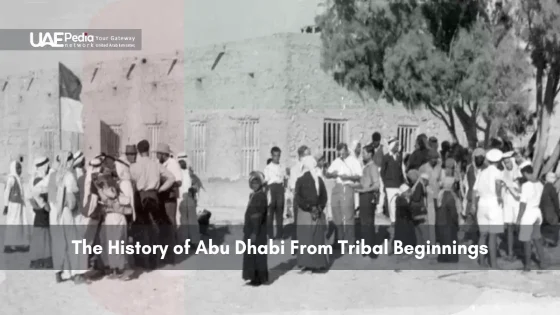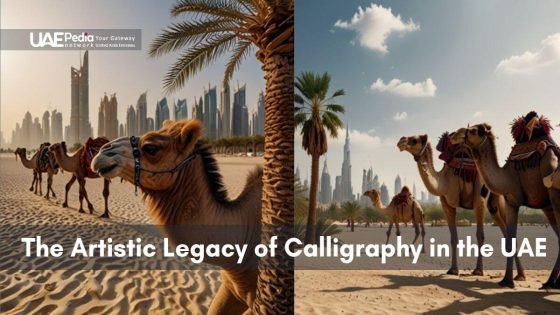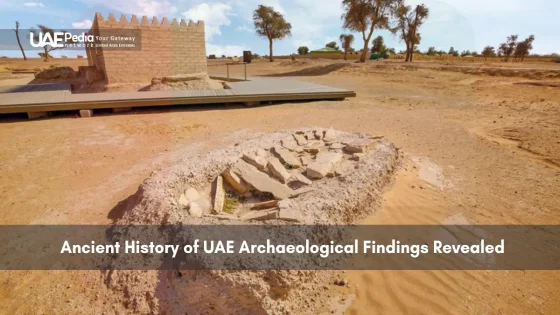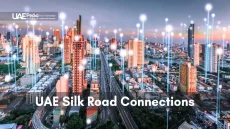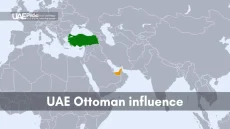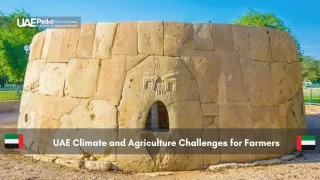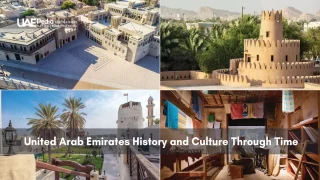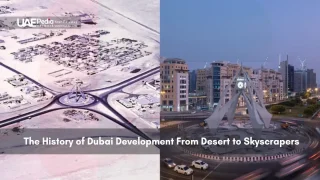How did a desert island with limited resources become one of the world’s most influential capitals? Rewind to 1761, when the Bani Yas tribe discovered freshwater here—a breakthrough that turned this windswept land into a thriving hub. Their ingenuity laid the foundation for what we now know as a glittering crossroads of culture and commerce.
Centuries before skyscrapers dotted the skyline, the Al Nahyan family—descendants of the Bani Yas—established roots here. Pearling and trade sustained early communities, but everything changed when oil transformed the region’s destiny in 1958. Today, that same island hosts a capital blending Bedouin traditions with 21st-century ambition.
This journey from tents to towers isn’t just about wealth—it’s a story of vision. Leadership turned harsh terrain into a global player, proving deserts can birth miracles. Want to see how tribal values still shape modern governance? Explore Abu Dhabi’s heritage through pivotal moments below.
- Freshwater discovery in 1761 sparked permanent settlement by the Bani Yas tribe
- Al Nahyan leadership guided evolution from pearling outpost to oil-powered capital
- Strategic decisions post-1958 oil discovery reshaped the United Arab Emirates’ trajectory
Introduction: Unveiling Abu Dhabi’s Remarkable Journey
Ever wondered how a coastal village evolved into a global powerhouse? This guide unlocks that story—one where tribal wisdom meets futuristic vision. We’ll walk through seven eras, from Bedouin camps to AI-powered skylines, revealing how leadership and resources shaped this desert jewel.
Scope of the Ultimate Guide
Consider this your time-travel toolkit. Over 12 chapters, we’ll explore:
- Ancient trade routes that connected the region to distant civilizations
- Pearl diving’s golden age—and why oil changed everything after 1958
- Sheikh Zayed bin Sultan Al Nahyan’s blueprint for unity in the United Arab Emirates
Setting the Historical Context
Leaders here didn’t just adapt—they reimagined possibilities. When crude oil surged from the earth, the government invested in hospitals and schools instead of palaces. That forward-thinking ethos still drives the city today.
| Era | Milestone | Impact |
|---|---|---|
| 1761 | Freshwater discovery | Permanent settlement begins |
| 1958 | First oil exports | Economic transformation launches |
| 1971 | UAE unification | Sheikh Zayed becomes founding father |
Grab your virtual sunglasses—we’re diving into shimmering souks, daring innovations, and the warm hospitality that turned sand into stardust. Ready to see how yesterday’s decisions built tomorrow’s oasis?
Tribal Beginnings and the Birth of a Settlement
Picture this: nomadic herders navigating sun-scorched dunes, their camels laden with hopes for survival. That’s how the Bani Yas—a resourceful tribal confederation—first encountered the island we now call home. By 1761, they’d cracked nature’s code, finding sweet water beneath the sands. This wasn’t just luck—it was destiny calling.
Bani Yas Tribe and the First Inhabitants
Life here demanded grit. The Bani Yas built palm-frond homes (barasti) along the coast, mastering pearl diving and fishing. Archaeologists still find pottery shards revealing their trade ties with Mesopotamia and India. As one elder’s saying goes:
“We measured wealth in shared wells, not gold coins.”
Discovery of Fresh Water on Abu Dhabi Island
That 1761 breakthrough changed everything. Fresh springs allowed date farms to flourish, anchoring the community. Soon, dhows sailed to Mumbai and Zanzibar, trading pearls for spices and textiles. Three key elements fueled growth:
- Water wisdom: Underground channels (aflaj) irrigated crops
- Pearl power: Divers harvested oysters for global markets
- Community craft: Shared meeting spaces became early governance hubs
By 1800, this once-quiet coast buzzed with merchants. The Bani Yas didn’t just survive—they thrived, proving deserts could nurture empires. Their legacy? A settlement built on resilience, now pulsing as a modern capital.
Ancient Roots and Early Archaeological Insights
Imagine brushing sand off a 3,000-year-old pottery shard—suddenly, whispers from the past come alive. Recent digs reveal this land cradled thriving communities long before skyscrapers rose. Archaeologists found stone tools near Jebel Hafeet dating to the Bronze Age, proving humans mastered this harsh environment millennia ago.
Evidence of Human Settlement Over Millennia
Teams uncovered Iron Age falaj irrigation systems—ancient engineering marvels that channeled groundwater to crops. These networks show early government collaboration, as maintaining them required village-wide coordination. One dig site yielded Mesopotamian glass beads, hinting at trade routes stretching across the Arab Emirates.
“Each layer of soil here holds chapters of human resilience,” notes Dr. Ahmed Al Mansoori, lead archaeologist at Marawah Island excavations.
Discoveries include:
- Pre-Islamic era coins minted in distant empires
- Carved stone seals used for document authentication
- Fossilized date pits showing agricultural innovation
| Era | Discovery | Significance |
|---|---|---|
| 3rd Millennium BCE | Ceramic vessels | Trade with Indus Valley civilizations |
| 1st Century CE | Iron weaponry | Defense systems predating Islam |
| 6th Century CE | Pearl diving weights | Early maritime economy foundations |
These findings reshape our understanding of the United Arab region’s social fabric. Tribal family structures evolved into governance models, laying groundwork for future leaders like Sheikh Zayed bin Sultan. Revenue from pearl trades and date harvests funded communal projects—proof that resourcefulness built this city’s DNA. Curious how these early systems influenced the Trucial States’ legacy? Stay tuned—every artifact whispers clues.
Exploring the history of abu dhabi: Key Milestones
What if we told you a single timeline reveals how desert ingenuity built a global capital? Let’s unpack the game-changing events that turned tidal flats into a buzzing metropolis—no time machine required.
Chronological Timeline of Transformative Events
From freshwater springs to black gold, these milestones rewrote the playbook:
- 1761: Bani Yas tribe establishes permanent settlement after discovering life-sustaining water
- 1793: Al Nahyan family moves seat of power to the island, formalizing governance
- 1892: Exclusive treaty with Britain boosts maritime security, protecting pearl trade routes
- 1939: First oil concession signed, though World War II delays drilling
- 1958: Commercial oil exports begin—pumping $25 million into the economy within two years
Impact on Regional Trade and Culture
Each decade brought seismic shifts. Early pearl traders connected the emirate to Bombay and Baghdad, while oil wealth later funded hospitals and desalination plants. Sheikh Shakhbut bin Sultan Al Nahyan’s 1966 modernization push sparked infrastructure booms—think paved roads where camels once trod.
“We didn’t just find oil; we discovered our capacity to reinvent,” remarked a former pearl diver turned oil worker in 1962.
Cultural exchanges flourished as the city became a crossroads. Indian merchants introduced new spices, while Bedouin storytelling traditions evolved into multimedia festivals. Today’s United Arab Emirates skyline stands as living proof—every glass tower rooted in yesterday’s bold choices.
The Emergence of Oil and Economic Transformation
What flips a sleepy fishing village into a global energy titan overnight? Drill down to 1958—geologists struck liquid gold beneath an abandoned pearling bed. This wasn’t just crude oil; it was rocket fuel for progress. Within four years, exports began, pumping fresh life into every corner of society.
Pearl Divers Become Pipeline Pioneers
Imagine swapping reed baskets for hard hats. Former pearl crews retrained as oil technicians, their maritime skills repurposed for offshore rigs. Sheikh Shakhbut bin Sultan Al Nahyan’s government funneled early revenues into hospitals and schools—proof that wealth served the people first.
Key changes unfolded faster than desert winds:
- Dhows made way for supertankers at modernized ports
- Mud-brick homes morphed into air-conditioned buildings
- Sand tracks became highways linking the island to mainland markets
Blueprint for a 21st-Century Oasis
Sheikh Khalifa bin Zayed Al Nahyan later turbocharged this vision. His team drafted master plans transforming the city’s skyline with gleaming towers and cultural landmarks. Oil didn’t just fund construction—it built bridges to the world stage through strategic partnerships.
| Aspect | Pre-1958 | Post-1958 |
|---|---|---|
| Main Export | Pearls (85% income) | Crude oil (92% income by 1965) |
| Workforce | Seasonal divers | Multinational engineers |
| Urban Growth | Coastal clusters | Planned districts with utilities |
“We channeled oil wealth into pipelines of opportunity—education, healthcare, sustainable growth.”
This seismic shift didn’t erase heritage. Traditional family governance models adapted, blending Bedouin consensus-building with modern policy-making. Today’s skyline tells the tale: a city where minarets and skyscrapers share horizons, all thanks to that fateful 1958 discovery. For more on oil’s seismic impact, dive deeper here.
Visionary Leadership and the Formation of a Nation
Visionaries don’t just build cities—they forge nations from shared dreams. In 1966, a leader emerged who saw beyond sand dunes to possibilities shimmering like mirages. His name became synonymous with unity: Sheikh Zayed bin Sultan Al Nahyan.
Architect of Unity
Sheikh Zayed’s hands shook not from age, but from urgency. He crisscrossed the coast, persuading neighbors that seven emirates united could thrive where individual areas might falter. His toolkit? Endless cups of Arabic coffee and unshakable belief in collective strength.
“Wealth isn’t money or oil. True riches lie in our people—their skills, heritage, and shared future.”
Key moments reshaped the region:
- 1968 meetings with Dubai’s Sheikh Rashid laid federation groundwork
- 1971 unification ceremony under a single flag
- 1972 creation of federal institutions for education and defense
Blueprint for a Federation
The United Arab Emirates didn’t emerge by accident. Strategic planning balanced emirate autonomy with centralized vision. Coastal trade routes became economic arteries, while oil revenues funded hospitals instead of palaces.
| Year | Milestone | Outcome |
|---|---|---|
| 1966 | Sheikh Zayed assumes leadership | Modernization projects accelerate |
| 1971 | UAE federation formed | Global recognition within months |
| 1974 | Abu Dhabi declared capital | Centralized governance established |
Today, highways stretch where camel trails once wound. Yet the city’s soul remains rooted in that 1971 pact—proof that visionary leadership can turn parched earth into fertile ground for progress.
Modern Urbanization and Architectural Marvels
Sky-piercing towers meet desert horizons—Abu Dhabi’s skyline dances between tradition and tomorrow. Architects here don’t just design buildings; they craft landmarks whispering ambition. From the Sheikh Zayed Grand Mosque’s marble domes to Etihad Towers’ gravity-defying curves, every structure tells a story of a city sprinting toward the future.
Iconic Landmarks and City Planning
Walk through the capital’s heart, and you’ll spot wonders blending Bedouin motifs with AI-driven efficiency. The Louvre Abu Dhabi’s floating dome mimics palm fronds, while Masdar City runs on 100% renewable energy. Urban planners prioritize green spaces—30% of Saadiyat Island is reserved for parks, proving growth and nature coexist.
| Landmark | Innovation | Cultural Nod |
|---|---|---|
| Sheikh Zayed Grand Mosque | World’s largest hand-knotted carpet | 82 domes reflecting Islamic architecture |
| Etihad Towers | Wind-resistant curved design | Observation deck framing desert-sea vistas |
| Al Maryah Island | Underground vehicle tunnels | Souk-style retail zones |
Innovative Infrastructure Developments
Abu Dhabi International Airport reshapes global travel with biometric check-ins and AI luggage systems. Hyperloop plans promise 12-minute trips to Dubai—because why wait? The United Arab Emirates’ construction industry now pioneers 3D-printed homes, slashing build times while honoring regional aesthetics.
New metro lines weave beneath sand, linking futuristic areas like Zayed Smart City. Here, sensors adjust streetlights using real-time foot traffic data. It’s not just smart design—it’s a world where tech serves community, mirroring the Arab Emirates’ timeless hospitality.
Governmental Evolution and Strategic Development
Tribal elders once gathered under date palms to resolve disputes—today, those same principles shape federal policies in glass-walled ministries. This evolution from settlement councils to a tech-savvy administration reveals how tradition fuels innovation.
Local Authority and Federal Governance
Sheikh Zayed bin Sultan Al Nahyan reimagined leadership when forming the United Arab Emirates in 1971. His approach blended Bedouin consensus-building with modern statecraft:
- Local majlis forums evolved into parliamentary committees
- Oil revenues funded education reforms rather than personal wealth
- Coastal watchtowers became cybersecurity hubs
“A ruler’s strength lies in empowering their people—not controlling them.”
Planning for a Future-Ready Metropolis
Urban planners here don’t just zone districts—they code resilience into every streetlight. The city’s 2030 blueprint tackles desertification with AI-driven water management and solar-powered desalination plants. Key shifts include:
| Era | Focus | Outcome |
|---|---|---|
| Pre-1958 | Survival | Shared wells, seasonal trade |
| Post-Oil | Infrastructure | Highways, hospitals, schools |
| 2020s | Sustainability | Renewable energy, smart grids |
Current ruler Abu Dhabi, Mohamed bin Zayed Al Nahyan, champions this dual vision. His teams balance rapid tech adoption with cultural preservation—like using 3D mapping to protect ancient falaj irrigation systems while building hyperloop networks. The Arab Emirates prove governance isn’t about choosing past or future, but weaving both into a thriving present.
Cultural and Economic Legacy Across Centuries
Beneath turquoise waves, calloused hands once harvested nature’s jewels—pearls that bankrolled an empire. Long before oil rigs dotted the horizon, the emirate’s heartbeat pulsed in rhythm with diving crews plunging into the Gulf’s depths. Their legacy? A cultural tapestry woven through centuries, where every pearl and palm frond tells a story.
From Seabed to Souk
Picture wooden dhows creaking under monsoon winds, sails billowing with oyster hauls. By 1900, pearl exports fueled 80% of the emirate’s income. Divers sang rhythmic work chants to endure 14-hour shifts, their breath held for treasures now displayed in Louvre Abu Dhabi. As one elder recalled:
“We traded pearls for rice and cloth—but kept our songs. Those melodies still echo in Al Hosn Fort’s corridors.”
Water shaped more than survival here. Oasis gatherings under date palms became early marketplaces, where bartering forged trust between Bedouin traders and foreign merchants. Shared wells weren’t just resources—they were communal lifelines, celebrated in poetry and dance.
Today’s glittering corniche mirrors yesterday’s bustling souks. Skilled artisans now craft gold filigree where pearl merchants once haggled, while mangrove conservation projects honor ancestral ties to the sea. The part water plays hasn’t faded—it’s evolved, flowing through desalination plants and AI-driven irrigation systems.
This isn’t just history preserved behind glass. It’s living heritage, where pearl motifs grace modern architecture and maritime festivals revive diving traditions. Step into Qasr Al Hosn, and you’ll feel centuries collide—proof that the emirate’s soul remains anchored in its salty, sunbaked roots.
Reflections: Abu Dhabi’s Journey into the Future
Standing at the crossroads of heritage and innovation, this emirate writes tomorrow’s chapter with yesterday’s wisdom. From Bani Yas ingenuity to Sheikh Zayed’s nation-building vision, each century adds layers to an ever-evolving story. Today’s skyline—a forest of glass and ambition—pays tribute to those who turned dunes into destiny.
Leadership here never settles. Current ruler Abu Dhabi champions smart construction projects merging solar tech with Bedouin design principles. Hyperloops will soon zip beneath ancient trade routes, while mangrove conservation revives pearl-diving legacies. The capital thrives because it honors roots while reaching for stars.
You’re invited to add your thread to this tapestry. Wander through Qasr Al Hosn’s restored corridors, then explore Masdar City’s driverless pods. Every step here connects past grit with future spark.
Ready to dive deeper? Uncover how tradition fuels tomorrow’s United Arab innovations. This isn’t just a place—it’s a living blueprint where you become part of the narrative. Sandstorms may fade, but the spirit that built an oasis? That’s eternal.
The Bani Yas tribe settled around Liwa Oasis in the 1700s before migrating to the coast. Their expertise in fishing, date farming, and later pearl diving laid the foundation for trade networks. When fresh water was discovered on the island in 1761, they established a permanent settlement—the genesis of today’s capital.
Before oil, pearl diving and limited trade drove the economy. The first commercial oil exports transformed revenues, funding infrastructure, healthcare, and education. This wealth allowed visionary leaders like Sheikh Zayed to invest in unifying the Emirates and modernizing cities.
Known as the “Father of the Nation,” Sheikh Zayed negotiated the UAE’s 1971 federation, balancing tribal traditions with bold modernization. His focus on sustainability, cultural preservation, and global partnerships set the blueprint for the Emirates’ rapid development while honoring its heritage.
From the coral-stone Qasr Al Hosn fort (1793) to the futuristic Louvre Abu Dhabi and Etihad Towers, the city blends heritage with innovation. Yas Island’s F1 circuit and mangrove-lined Corniche also showcase how urban planning prioritizes both livability and global appeal.
For centuries, pearling crews sailed Arabian Gulf waters from May to September. The industry fostered seafaring skills, traditional songs (fijiri), and a communal work ethic. Though oil replaced pearls economically, their legacy lives on in museums, jewelry, and annual festivals.
After Britain’s 1968 withdrawal announcement, Sheikh Zayed and Dubai’s Sheikh Rashid initiated talks with five other emirates. Diplomacy overcame challenges like resource sharing and federal structure, culminating in the December 2, 1971, unification agreement—a rare peaceful alliance in regional history.
